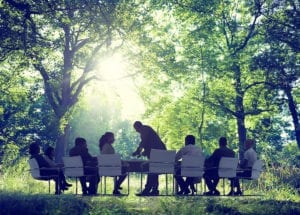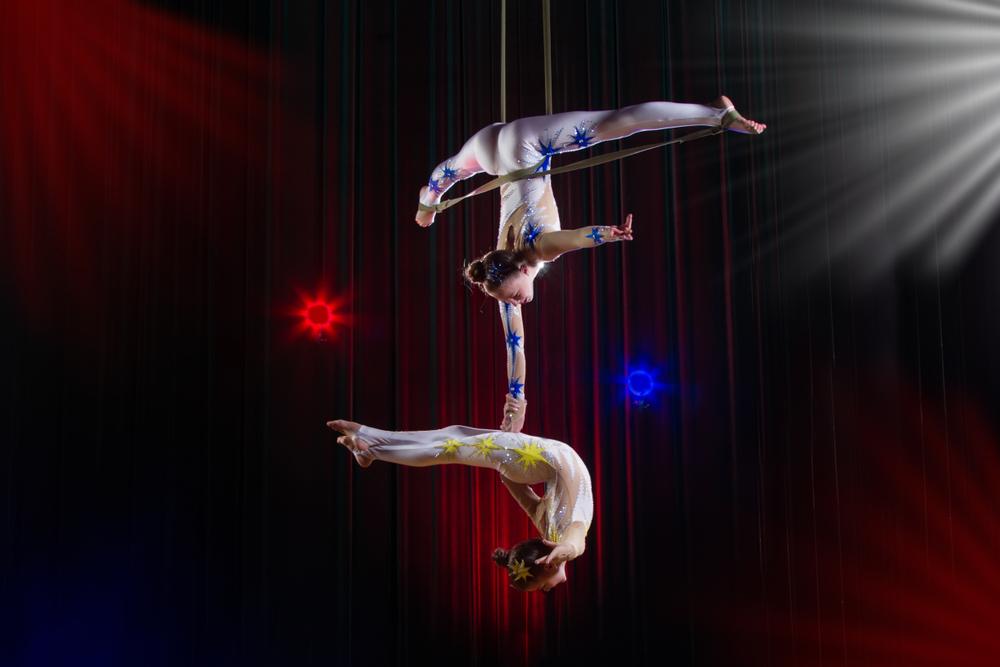How many organizations and organizational leaders want their organizations to still be thriving 100 years from now? On one hand, we might think a lot of leaders and stockholders would like to see this kind of longevity in the organizations they lead or invest in. However, we can’t get there if we are only using quarterly profits as feedback loops. These short-term measures of success don’t always support the organizations’ ability to thrive in the long-term. If we wanted our organizations to last, we would be smart to look to nature’s design to give us a model to emulate in our organization.
The power of nature’s design – creating conditions that last
Nature has existed for 3.8 billion years. It is clearly a measure of a powerful design framework that is designed to last over time. Nature is a highly complex adaptive system filled with interdependencies and multiple systems influencing each other. Nature’s underlying design creates infinite possibilities and dynamic equilibrium that allows life to thrive and evolve. Here are the nine design frameworks that support the conditions conducive to future life (Benyus, 2002). They are:
- Nature runs on sunlight: a free resource when paired with photosynthesis creates nutrients that support all life on our planet
- Nature uses only the energy it needs
- Nature fits form to function and by focusing on purpose, it allows for continual adaptation
- Nature recycles everything / waste is never wasted: it uses waste to fuel future life
- Nature rewards cooperation so interdependent relationships can help support other life in the ecosystem
- Nature banks on diversity because diversity creates resilience in an ecosystem
- Nature demands local expertise and self-organization. It doesn’t require top down direction or supervision to create initiative that is aligned with the ecosystem. It depends on local expertise and a species’ ability to self-organize to get things done in an ecosystem
- Nature curbs excesses from within using robust feedback loops
- Nature taps the power of limits by maximizing the benefits of the constraints of the ecosystem like temperature ranges, soil fertility, rainfall etc.
Traditional Organizational Design – built to collapse
Juxtapose this to traditional organizations. We use completely different design frameworks. Our usual frameworks are focused on what we can control and make happen.
- We use resources that we extract from the earth to turn into private / organizational profit. We see organizational resources as finite that we must pay for.
- We over focus on control and accountability to ensure we get things done. This often leads to over engineering and costly staffing and supervision costs.
- We fall in love with forms that no longer serve the higher purpose of the organization, leading to less capacity to adapt to changing conditions.
- We design products that have waste as a natural by-product of production and get rid of waste that we see as useless or are not biodegradable.
- We assume self-interest and competition are universal behaviors in people and design our organizations to reinforce them to drive productivity.
- We resist the benefits of diversity and reinforce sameness as easier to lead and manage.
- We design organizations to require top-down direction, control, and supervision, resulting in the diminishment of self-organization in our employees.
- We resist feedback and wait for governmental regulations to change our processes that are harming the public.
- We design our organizations to assume there are no limits or we see limits as problematic instead of using constraints as sources of innovation.
If you see your current organization reflected in just a third of these traditional organizational characteristics, your organization will not last the next 100 years. We are living in a highly turbulent external environment, where nature’s design to continually adapt, innovate, use only the energy it needs, and be highly efficient and effective could be a wonderful model to use to redesign our organization and its strategies.
Nature has 3.8 billion years of research and development on how to design a system that lasts. It is designed to create conditions conducive to the life of future generations. What if our organizations were designed with the same goal in mind? If we used this as a criterion for our decisions, we would look to a longer time horizon to evaluate our decisions and strategies. If this intrigues you, read Leading from the Roots. It is a road map to redesign your organization to last!
Benyus, J. (2002). Biomimicry: Innovations inspired by nature. New York. Harper Collins.
Dr. Kathleen E. Allen is the author of Leading from the Roots: Nature Inspired Leadership Lessons for Today’s World (2019) and President of Allen and Associates, a consulting firm that specializes in leadership, innovation, and organizational change. She writes a blog on leadership and organizations that describes a new paradigm of leadership that is based in lessons from nature and living systems at www.kathleenallen.net






